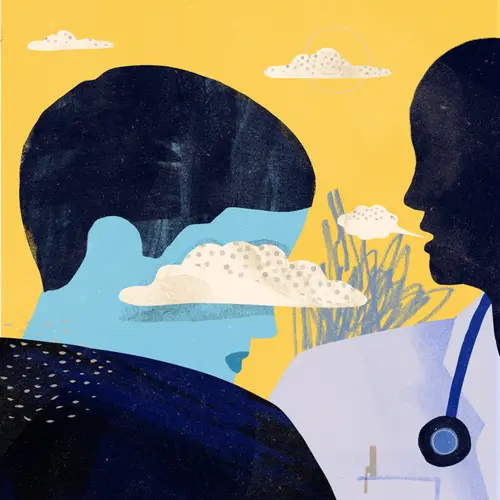What Is Costochondritis?
Costochondritis is when the cartilage (connective tissue) that joins your ribs to your breastbone is inflamed. Doctors call this area of your body the costochondral joint.
If you press on your upper ribs and it feels tender, or if your chest hurts when you move around, you may have it. The pain can start suddenly or gradually.
One study found that 30% of people complaining of chest pain had costochondritis. The condition affects both children and adults, but is more common in people 40 and over. It’s more likely to affect women and people of Hispanic origin.
Is costochondritis dangerous? This condition is mostly harmless. But if you have sudden chest pain, always have it checked out by a doctor to make sure your heart is healthy. Unlike costochondritis, a heart attack often causes widespread pain along with symptoms like sweating, nausea, and a hard time breathing.
Injury, physical strain, respiratory infection, rheumatoid arthritis or psoriatic arthritis, chest wall infections, tumors, or rare conditions like relapsing polychondritis may also cause chest pain.
Costochondritis Causes
There isn’t a single known cause of costochondritis. Doctors aren’t sure how your costochondral joint gets inflamed. But they do know that inflammation is one way your body responds to injury or infection. The condition has been linked to:
- Strain due to exercise or exertion
- Chest injury
- Lots of coughing
- Infection, such as respiratory infections
- Intravenous (IV) drug use
Costochondritis Symptoms
When your costochondral joint becomes inflamed, it results in chest pain and tenderness. Most people describe the pain as sharp, achy, and pressure-like. When you press on your chest, it feels tender and painful. The pain usually gets worse when you move around, breathe deeply, or sneeze. Some people have pain when they wear a seatbelt, hug someone, or lie down.
Costochondritis pain locations. You usually first feel pain on the front left side of your breastbone. It often affects more than one rib. It may spread to the rest of your chest, and even affect your arms and shoulders.
Costochondritis Diagnosis
Your doctor will do a physical exam, pressing on your chest to check for areas of tenderness. They will also take a look at your range of motion and listen to your breathing.
If you’re over 35, at risk for coronary artery disease or a blood clot, or you recently had a respiratory infection, your doctor may order more tests, like a chest X-ray and EKG, to rule out more serious problems.
Costochondritis Treatment
Since costochondritis isn’t dangerous, treatment focuses on pain relief. Most of the time, chest pain from costochondritis will go away on its own. In the meantime, you can try one or more of the following on your own:
- Taking over-the-counter (OTC) pain relievers like aspirin or ibuprofen 2-3 times a day (making sure to follow the directions on the label carefully)
- Using hot compresses or heating pads in the painful area
- Avoiding activities, like strenuous exercise or reaching up, that make the pain worse
Talk to your doctor before taking OTC pain medications if you have:
- High blood pressure
- Heart disease
- Kidney disease
- Liver disease
- Past stomach ulcers or internal bleeding.
If your chest pain won’t go away or gets worse, see your doctor. They can give you a shot of a powerful anti-inflammatory medicine called a corticosteroid to reduce pain and swelling. They’ll inject the corticosteroid into the area where you’re feeling pain. But because having too much of a corticosteroid can damage your costochondral joint, you can only have this treatment once every few months.
Your doctor might also try a procedure called transcutaneous electrical nerve stimulation, or TENS. A doctor or nurse puts adhesive patches on your skin near where you’re feeling pain. They use a TENS device to send a weak electrical current into your skin through the patches. It’s thought to work by stopping pain signals from reaching your brain.
Your doctor can also give you information on how to improve your posture and fix any muscle imbalances.
If necessary, they can refer you to a specialist called a rheumatologist, who treats diseases of the joints, muscles, and bones.
How Long Does Costochondritis Last?
Costochondritis isn’t a permanent condition. Most of the time, your chest pain will go away within a couple of weeks.
But in some cases, symptoms can linger for months. And sometimes it comes back again after it heals. About a third of those with costochondritis will have it for about a year.
